#crew: zack snyder
Text



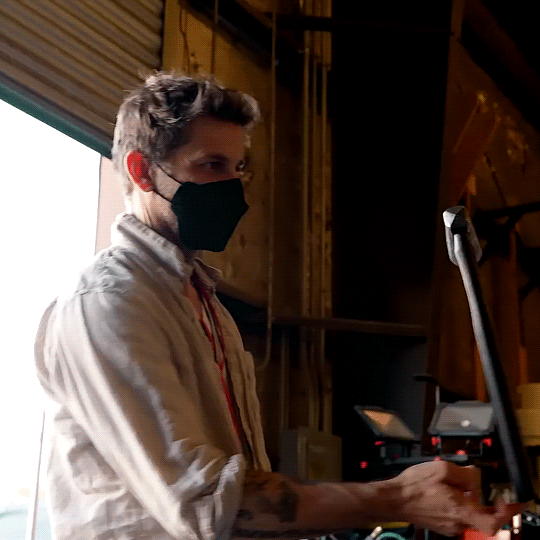
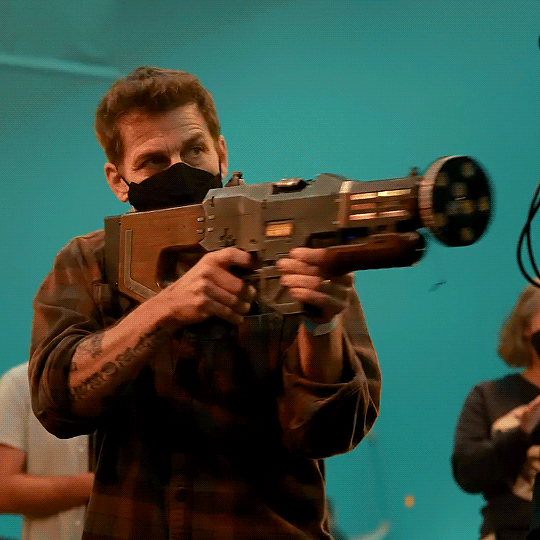
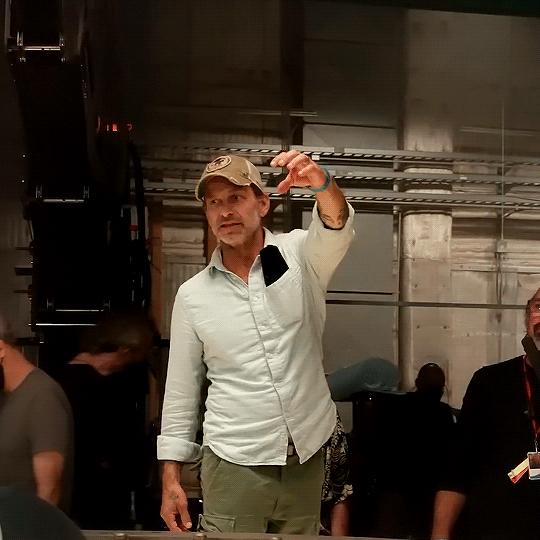

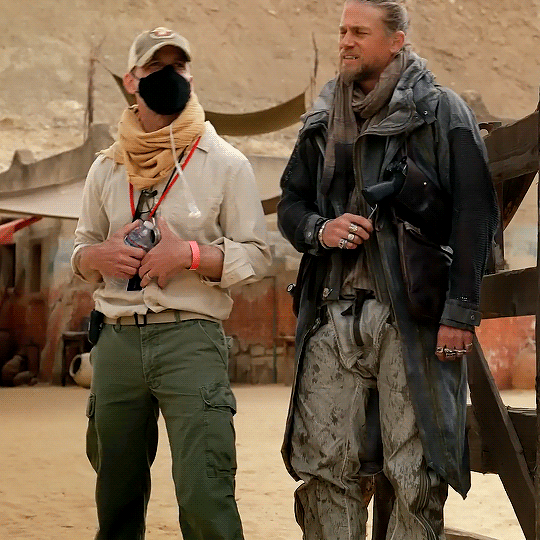
"This movie for me has existed elementally for 20 years. It's a story of a few against many, impossible odds, good versus evil. I get a chance to tell the story that I've thought about for quite a while. I just really wanted to make a giant, atmospheric space adventure." - Zack Snyder, behind the scenes of Rebel Moon.
#rebelmoonedit#rebel moon#zack snyder#zacksnyderedit#crew: zack snyder#crew#gif#bts#mine#m: gif#m: crew#by jessica#pls release a trailer so i can gif something other than these crumbs :(
46 notes
·
View notes
Text
Don't judge me 🥵🥵🥵
Source: RebelMoon X
#michiel huisman#zack snyder#rebel moon#rebels#the RM crew#but his beard tho#he so fine#his holy hotness#snyderverse#heel mooi#i can't help it#best actor#mercy#all day
12 notes
·
View notes
Text
Spoilers here!
Matthew Goode is 46 Years Old
Actor: Matthew Goode was born in Devon, England and initially appeared in BBC productions and TV films like Confessions of an Ugly Stepsister. His big break came playing the romantic lead in the Mandy Moore romcom, Chasing Liberty. He's appeared in a wide range of productions, including Zack Snyder's cinematic adaptation of Watchmen and Downtown Abbey. His most acclaimed work may be his time on The Crown playing Antony Armstrong-Jones, which earned him Emmy nominations.
Notable Films & TV Shows:
Title Role
Watchmen Ozmandias
The Good Wife Finn
The Crown Antony Armstrong- Jones
Downtown Abbey Henry Talbot
A Discovery Of Witches Matthew de Clairmont
Character: Matthew Goode plays Kristof Lazar in Abigail. Kristof is absent for much of the film, but the danger hs potentially poses to the main characters lingers. As the father of Abigail, the crew initially expect a big payoff for her return. However, the dangerous qualities of the crimelord shifts the tone of the film into something more tense. Kristof only appears towards the end of the film. However, Kristof's true origins are left a mystery in Abigail, setting him up as a potential way to expand the film into a series.
17 notes
·
View notes
Text
I watched Rebel Moon: Part Two – The Scargiver.
The film felt less “awkward” to me than Part One which, although I agree had flaws, I enjoyed and thought was unreasonably criticized. In my opinion, Part Two’s pacing was better, it was more suspenseful, more “epic”, and there were a few rousing moments. That said, it makes sense since A Child of Fire was mostly about recruiting and introducing a team of warriors while this movie is about them actually fighting.
It was already obvious to me that a lot of work had gone into this project, but then watching Creating a Universe - The Making of Rebel Moon confirmed this. They spent so much time building this world, its people, cultures, creatures, technologies, languages, etc. It feels like everything and everyone we see on screen was carefully crafted and has a detailed backstory. Also, they built a spaceship and an entire village, dug a river, created a field, organically grew wheat, and had the actors actually harvest it in the film! I think that’s impressive.
Zack Snyder had been building this universe in his mind for years, drew his own storyboards, and even assembled custom camera lenses because he had a very precise idea of what he wanted the movie to look like. It’s heartwarming to see that people (cast and crew) who worked with him defend the project and say how invested, respectful, and passionate the director was. For him and for the many equally creative, talented, and dedicated teams involved, I’m glad the artistic vision they shared at least had a chance to become a reality.
As imperfect (but honestly far from being as bad as people keep saying) as what we’ve seen so far may be, I still believe the saga has a lot of potential. We’ll only be able to properly judge it after seeing the long, R-rated versions of the films anyway (and hopefully a Part Three)...
In the end, though, I realize what I truly care about, more than how the story of Rebel Moon is told, is its universe as a whole, but also the passion of the many people who put their hearts and souls into bringing it to life to such a high level of detail. It exists, and as someone who’s been building many worlds in my own mind since I was a child, that makes me happy.
#go zack & co. live your dreams.#do it for all of us#rebel moon#the scargiver#rebel moon part two the scargiver#rebel moon part 2#I recommend the short documentary because what they did is truly impressive#zack snyder#possibly one of the few genuinely wholesome people in the film industry#if that’s true it feels like he 'deserves' this you know?#rebel moon however doesn’t deserve the hate
11 notes
·
View notes
Text
It's just wild to me how the Snydercut movement has been painted as this horrifically abusive misogynistic dudebro thing that was onlky ever spearheaded by chuddy white guys when the biggest person fighting for this movie's release was Ray Fisher, literally the man who played Cyborg
Like everyone really loves to forget the fact that Ray Fisher, an absolute newbie in the industry in his first ever motion picture role, literally destroyed his entire career to call out the real life abuse directed towards the cast and crew and the racism and the misogyny of Joss Whedon and Geoff Johns that literally made working on a set that was once seemingly a fun and collaborative experience under the direction of Zack Snyder into a living hell that the cast wanted to escape from as fast as possible
How have you all let Warner Brothers and Geoff Johns control this narrative so much that you forget about the real tangible abuse enacted against real human beings after a man stepped down because his daughter committed suicide and convince you all that this was really just some petty misogynistic dudebros mad that their daddy director didn't get to make his movie
Like hello?
Ray Fisher did not get himself blacklisted from the industry for you all to just believe whatever the Warner Bros PR team tells you
#ignore me#the way that the literal tangible abuse enacted by joss whedon literally always gets left out of the snydercut conversation is disgusting#you should all be ashamed
20 notes
·
View notes
Text
The Quiet Misogyny of “Buffy the Vampire Slayer”

When accusations that Joss Whedon, creator of Buffy the Vampire Slayer, abused his power on multiple sets, few fans of his work seemed surprised. According to actor Charisma Carpenter, who had a recurring lead role as Cordelia Chase on Buffy and starred in its spinoff series Angel, Whedon created a toxic work environment and repeatedly harassed her on set. In a statement posted across the actress’s social media accounts, Carpenter revealed that the traumatizing experience of working with Whedon caused her anxiety and a chronic physical condition that she still struggles with today.
Carpenter’s statement comes directly on the heels of WarnerMedia’s investigation into workplace misconduct allegations levied against Whedon after he was hired as a replacement director on Justice League (2017) following Zack Snyder’s departure. In July 2020, actor Ray Fisher, who played Cyborg and worked with Whedon during post production on the film and its subsequent reshoots, wrote on Twitter, “[Whedon’s] on set treatment of the cast and crew of Justice League was gross, abusive, unprofessional, and completely unacceptable.” As a show of support for Fisher, Carpenter revealed that she had participated in WarnerMedia’s investigation, stating, “Despite my fear about its impact on my future, I can no longer remain silent. This is overdue and necessary. It is time.”
In December 2020, WarnerMedia shared that they had concluded the investigation and claimed they had taken “remedial action.” Prior to the investigation’s conclusion, Whedon voluntarily stepped down from his role as showrunner for the upcoming WarnerMedia-owned HBO series, The Nevers, due to the pandemic, so it remains unclear what so-called remedial action was actually taken against him.
The allegations against the director and former Hollywood sweetheart—or whatever the male nerd equivalent of that is—span nearly the entirety of his onscreen career. While some fans of Whedon may struggle to understand how a man whose work has been lauded for its depiction of Strong Female CharactersTM and themes of empowerment could perpetuate the abuse he outwardly condemned, other fans were less shocked.
In addition to accusations by Whedon’s ex-wife Kai Cole, who wrote a scathing essay for the Wrap in 2017 about her ex-husband’s faux feminism and predatory affairs, rumors have swirled for years about Carpenter’s untimely departure from Angel. However, feminists who are familiar with Whedon’s shows, including Buffy, Firefly, and Dollhouse, as well as his first two Avengers films, have long-since recognized the quiet (and not-so-quiet) misogyny directly embedded within his filmography.
To understand Whedon’s nerdy repackaging of entitlement toward women and their bodies, one must look no further than the subtext of Buffy the Vampire Slayer, the series that initially launched him to success.
During Buffy’s seven-season run from 1997 to 2003, and even still today, comedic sidekick Xander Harris (Nicholas Brendon) became a frequent target of feminist ire. There are countless think pieces, forums, blog posts, and Reddit threads dedicated to fans’ burning hatred of the character, and the show’s insistence on framing him as morally correct when he’s quite clearly in the wrong. From the very first episode, Xander is positioned as the “nice guy” of the friend group—the wisecracking, lovable nerd who reads X-Men comics and doesn’t get a second glance from most women.
As the everyman, Xander caters to an audience of men and boys who might relate to his average looks, inability to entice women, and his literal powerlessness up against the superpowered women he fights alongside. His friends and allies have varying degrees of usefulness in the fight to protect Sunnydale, which sits on a demon hellmouth: Buffy Summers (Sarah Michelle Gellar), Xander’s best friend and unrequited love interest, is imbued with vampire slaying abilities, and Willow Rosenberg (Alyson Hannigan), his other best friend and briefly-requited love interest, has ’90s-esque computer hacking skills and eventually becomes a powerful witch. Additionally, at any given time, he is surrounded by allies that range from friendly vampires and ex-demons to superstrong government soldiers and werewolves.
In any room he’s in, Xander is never the strongest, smartest, bravest, best looking, or even the most charming—he is utterly average in every way. In an early Season 1 episode, Xander sums up his character archetype perfectly when he says, “I laugh in the face of danger. Then I hide until it goes away.” Despite Xander’s mediocrity and inherent powerlessness in comparison to the women he surrounds himself with, one of his key character traits is his sexual entitlement. He regularly makes references to his perpetual horniness and sexualizes almost every beautiful woman he encounters.
When he first meets Buffy, he immediately develops a crush on her, and despite her repeated rejections over the course of several seasons, he continues to wait for an opportunity to be with her. Xander pining over his best friend might not necessarily make him bad, but it’s concerning that he also harbors resentment toward every guy Buffy dates or shows interest in, occasionally even lashing out at her for daring to choose other men over him.
Worse, he views himself as a “nice guy” who is entitled to sexual and romantic relationships with the beautiful women he fawns over. Except Xander isn’t really a nice guy at all—his entire self-identification as a nice guy isn’t actually supported by his interpersonal relationships or behavior, and in fact, is often directly contradicted by them.
Interestingly, Xander doesn’t simply act as a stand-in for sexually frustrated nerd boys in the audience who want to fuck women like Buffy; he is also, quite literally, Whedon’s self-insert character. Fans of the show had initially speculated about this, and Whedon confirmed it when he was interviewed by NPR in 2000, stating, “Xander is obviously based on me.” This was also reconfirmed during a panel at the 2011 Emerald City Comic Con when actor James Marsters, who played the vampire Spike, said, “[Xander] is Joss. That’s the way he sees himself.” As Buffy fans gain a clearer picture of Whedon’s behavior behind the scenes, it’s ironic that a man with a track record of abusing his power over women and people of color on set would align himself with a character whose primary character trait is powerlessness.
Why does a director and showrunner who weaponizes his power over his cast members to control them—and in the case of Charisma Carpenter, attempt to literally control her body and reproductive choices by pressuring her to get an abortion—get to hide behind a fictional facade of helplessness? Because he likes comics and wasn’t popular with girls in high school? Perhaps the most unlikely indictment of Whedon comes from the series itself, in a Season 6 arc that flips the concept of the harmless nerdy misogynist on its head. In the sixth season of Buffy—which notably featured the least involvement from Whedon, as he stepped down to an executive producing role to focus on other projects—a new group of villains called the Trio is introduced. The Trio features three socially inept, Star Wars-loving and comic book-obsessed boys who attempt to neutralize Buffy and take over Sunnydale. The group of seemingly harmless nerds evolves into a major threat over the course of the season.
After creating a mindless sex robot and being dumped by his girlfriend Katrina (Amelinda Embry), Warren Mears (Adam Busch), the leader and most malicious member of the group, creates a device to render his ex-girlfriend into a state of submission so he can force her to be his sex slave. However, before he is able to rape her, the device malfunctions, and when she tries to escape, Warren hits her over the head with a champagne bottle and kills her. Later in the season, Warren also fatally shoots Tara, a fan favorite and one of the few queer women characters in the series.
Despite their inability to adhere to a traditionally idealized version of smooth-talking and muscled masculinity, the Trio’s proximity to nerd culture does not exempt them from causing harm. In fact, their self-identification as geeky underdogs is what provides them cover and their desire to acquire social power is what fuels their violence.
In an oft-cited acceptance speech for the “Men on the Front Lines” award presented by Equality Now, Whedon recalled a common question he received from reporters: “So, why do you write these strong female characters?” In response, he said, “Because you’re still asking me that question.”
Though the response offers an empowering sentiment and makes for a highly quotable soundbite, he betrays his real motivations for writing fictional women within the same speech. He says, “When I created Buffy, I wanted to create a female icon, but I also wanted to be very careful to surround her with men who not only had no problem with the idea of a female leader, but, were in fact, engaged and even attracted to the idea.” He then went on to “jokingly” say that he writes characters like Buffy “‘cause they’re hot.”
Whedon’s acceptance speech unwittingly reveals the contradictions, and similarities, within both his work and interpersonal relationships. Though he may have spent decades fooling Hollywood and his fanbase with his performative brand of feminist allyship, Whedon’s public persona was always a ruse to disguise the fact that he never actually respected strong women. He simply wanted to fuck them.
#Buffy The Vampire Slayer#Joss Whedon#Buffy Summers#Xander Harris#Willow Rosenberg#BTVS#Misogny#Sexism#Sexist
11 notes
·
View notes
Text
Treat Your S(h)elf: Gates of Fire by Steven Pressfield (1998)
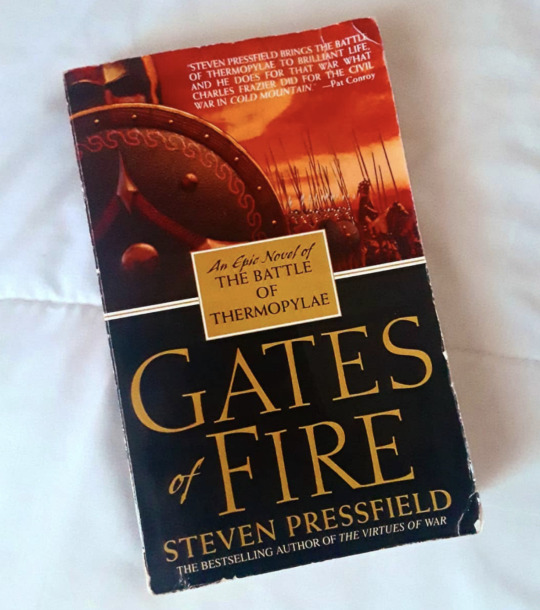
At Thermopylae, a rocky mountain pass in northern Greece, the feared and admired Spartan soldiers stood three hundred strong. Theirs was a suicide mission, to hold the pass against the invading millions of the mighty Persian army.
Day after bloody day they withstood the terrible onslaught, buying time for the Greeks to rally their forces. Born into a cult of spiritual courage, physical endurance, and unmatched battle skill, the Spartans would be remembered for the greatest military stand in history–one that would not end until the rocks were awash with blood, leaving only one gravely injured Spartan squire to tell the tale….
- Steven Pressfield, Gates of Fire (1998)
This is one of my favourite books on war I’ve ever read. I took my dog-eared copy with me last year when I went with ex-military veterans friends to climb Olympus and hike around Greece. One of the places we stopped was Thermopylae - where you can still bathe in the hot springs as the ancient Spartans and Athenians did before their monumental battle with the Persians. The very recent death of the last king of Greece, King Constantine II of the Hellenes, made me think of my trip to Greece last year and of one of the books I read on that trip. I thought I might share some of my rambling thoughts I had written down at the time, and also since then, about the retelling of one historical turning point in our western civilisation that has now entered into myth.
In 1998 was the year Frank Miller’s iconic comic graphic novel 300 about the the Battle of Thermopylae – where a tiny Greek force led by 300 Spartans held out for three days against an immense Persian invasion in 480BC - was published to great critical acclaim. Zack Snyder highly stylised slick film version of Miller’s 300 defied audience and studio expectations when it stormed the box office with Spartan-like ferocity back in 2007. Its mix of ancient history, comic-book iconography and sound-bite dialogue immediately found its way into the verbal and visual lexicon of contemporary pop culture; but things could have been very different. In 1998 Miller’s publication overshadowed the publication of Steven Pressfield’s more conventional historical novel, Gates of Fire, took its name from the eponymous battlefield, Thermopylae (referred to in 300 as ‘the hot gates’).
Pressfield, an ex-Marine soldier, had worked as a screenwriter creating disposable action-movie scripts for the likes of Steven Seagal and Dolph Lundgren in the late 1980s and early 1990s before writing his first novel, The Legend of Bagger Vance, which was adapted into the Will Smith film of the same name. It too won critical acclaim and was a huge best seller. George Clooney’s film production company bought the rights and David Self (screenwriter of 13 Days and Road to Perdition) was brought in to adapt it. Bruce Willis was dying to be in it and iconic director Michael Mann signed on the direct it. Instead the film went into development hell before Snyder’s film stole a march on Mann’s version to come out first in 2007.
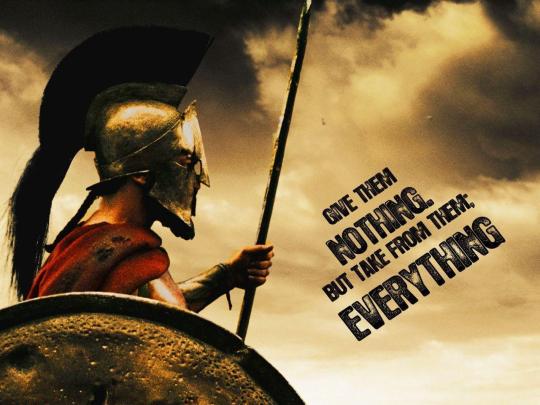
As a Classicist and ex-veteran I found Both Miller’s comic graphic novel and Snyder’s film a severe guilty pleasure. But I have to say I found reading Steven Pressfield’s brilliant novel deeply satisfying on many more levels.
The book I remember well as an American special forces chap I knew out in Afghanistan gave it to me to read because I was complaining I was fast running out of things to read between missions. I loved it.
Like a good officer I passed the book along to others in my corps - rank and file - and within a month or two it had been passed around a fair bit. It led to endless arguments about the Greeks and the Western way of war in and out of the cockpit with my brother/sister aviators and crew as well other officers and the men.
For the soldiers on the ground the book felt more visceral. As a fellow brother British infantry officer said the depictions of phalanx warfare raised his blood pressure at how well he and his men could relate. I never felt more Spartan than I did I sitting on my arse baking in the sun of Afghan red dust mornings. We all related to this story one way or another - the sand, sweat, blood, feelings of combat, and thoughts of mortality.

Most book reviewers loved the book. “Does for (Thermopylae) what Charles Frazier did for the Civil War in Cold Mountain’, enthused author Pat Conroy. The New York Times praised the book’s ‘feel of authenticity from beginning to end.’ Author Nelson DeMille admired the ‘mastery, authority and psychological insight.’ Sarah Broadhurst, in The Bookseller, particularly wanted to recommend the book to women: “ Although it has a male feel to it, it will appeal to both sexes, as my two readers and I can testify. In fact, it is a great example of the rebirth of the historical novel, which I am sure is on its way.” Where people quibbled, it was usually about the violence of some of the descriptions, or on small errors of fact. The Times called it ‘a story of blood, biffing and bonking, thigh deep in blood, terror-piss and entrails’ but acknowledged that ‘their heroism still makes the hairs at the back of the neck bristle’. The Times Literary Supplement sniped at Pressfield for confusing two different Greek cities called Argos, and for what it called ‘phallocentric discourse’, but also called the book ‘a monument to the important twentieth-century art of pace.’
The novel stands out in the way it makes everything come alive from the soldiers' training, the scenes of actual battle, and most particularly the scenes after or between battles. The discussions of fear, and of how officers and soldiers should behave are particularly poignant and also felt very real to those of us who have experienced war first hand. What I found pleasantly surprising was how well written it was with its very strong portrayals of women as secondary characters. With nearly all military books women are often relegated to the background but here I found some of the strongest depictions of women in this genre. The women don't fight in the battles, yet are courageous and compassionate, intelligent and influential.
Many readers will be familiar with the broad strokes of the story of the battle. But it’s worth recapping here for those that don’t. In 480 BC, King Xerxes lead a Persian army of between one and two million into Greece. The Spartan King Leonidas lead 300 Knights and some 700 Thespaian allies to the narrow pass at Thermopylae, in order to hold the Persians back as long as possible. They proceeded to hold the pass for 7 days. These 300 Spartans died to a man defending the pass against a force of over a million and the epitaph provided to them by the poet Simonides, "Go tell the Spartans, stranger passing by, that here obedient to their laws we lie", is perhaps the most famous in history. Their example rallied and inspired all of Greece and eventually the Persians were defeated in the naval battle at Salamis and on land at Plataea.

The story is told from the point of view of its narrator Xeones of Astakos, a helot, a slave of the Spartans, and has his own conflicted feelings about Spartan society. He is taken, wounded, before Xerxes, and asked to explain “who were these foemen, who had taken with them to the house of the dead ten or, as some reports said, as many as twenty for every one of their own fallen?” In Xeones’ own words, therefore, we get the story of his life; from when his own city is destroyed, to when he comes to Sparta as a slave, to the time when he finally comes to stand beside the Spartiate in the fateful battle. As the sole survivor among the Spartans, Xerxes wishes Xeones to tell his story to the Persian court historian Gobartes. Xeones starts with the tale of how he came to Sparta. As a youth, his village of Astakos is destroyed and his family slaughtered, but he and the cousin he loves, Diomache, escape. As they wander the countryside, Diomache is raped by soldiers and Xeones is crucified after stealing a chicken, although Diomache saves him from death. Thrown into despair, because his hands are so damaged that he can never wield a sword, Xeones heads off by himself to die. But he experiences a visitation from the Archer god Apollo Far Striker and realizes he can still wield a bow. When Diomache, who is also distraught after being violated by the soldiers, takes off, Xeones heads to Sparta where he hopes to join the army.
The middle section of the book, which is at a much slower pace, deals with his life in Sparta and the training techniques used by the Spartans to create what was one of the most formidable fighting forces the world has ever seen. Eventually he becomes the squire of one of the 300 knights who are chosen for Thermopylae.
The final section, on the battle itself, depicts wholesale slaughter accompanied by acts of ineffable courage. It also relates two of the great lines of all time. When Xerxes offers to spare the Spartans lives if they will surrender their arms, Leonidas is reputed to have snarled, "come and get them." And upon being told that the Persians have so many bowmen that the cloud of arrows would blot out the sun, one of the Spartans says, "good, then we'll have our battle in the shade."
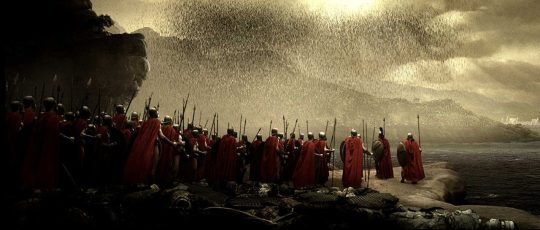
Pressfield being an ex-Marine grunt himself gives a very convincing grunt’s-eye-view of the battle and of Spartan society to create a fantastically blood pumping engaging tale. Pressfield sets himself the task of explaining Spartan culture to us in all its glory, humour, brutality and philosophy. To do so, he draws on his personal experience as a US infantryman, as well being strongly versed in Classics. The result is a fascinating tale, on one level a war story written with great pace and excitement, on another a ruminative tale of man’s capacity for honour, heroism, and self-sacrifice.
As a Classicist (since confirmed by Pressfield in many interviews) he makes excellent use of the ancient historical sources (such as they are). The most useful sources seem to be Herodotus first, his pages about the battle. Plutarch’s Lives of various Spartans — Lycurgus, Agesilaus, Lysander, etc - can be discerned strongly as the section of his Moralia called Sayings of the Spartans and Sayings of the Spartan Women. Xenophon of course was the best contemporaneous eyewitness to real Spartan society. Constitution of the Lacedaemonians, the Cyropaedia and even the Anabasis greatly help Pressfield pepper history with authentic detail. Diodorus’ version of the battle added the thought of the night raid (which The 300 Spartans also had) and Pressfield takes that from him. Pressfield has said that he didn’t consult recent archaeology, other than going to Sparta myself and checking out the ruins of Artemis, Orthia and so forth.
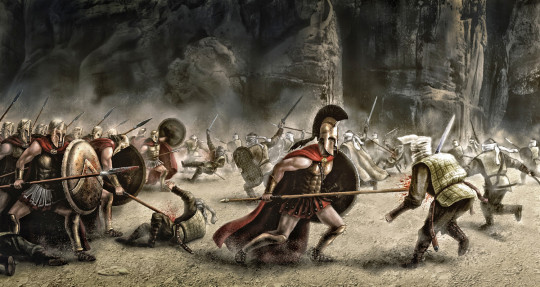
But still huge gaps remained. This is where Pressfield the ex-Marine and the well educated novelist come together. There was much detail that he needed to consciously to make up and make it sound plausible and even true. For instance, the concept of phobologia, the Science of Fear. That’s completely invented, yet Pressfield, as a Marine veteran, absolutely felt certain the Spartans, like every other warrior race, must have had something like that, a religious-philosophical doctrine of warfare understanding the principles of their culture, probably a sort of cult-like initiatory situation.
Pressfield in one interview admitted that the speech that Alexandros recites holding his shield — “This is my shield, I bear it before me into battle, etc.” — was a fictional invention based upon his own experience in the US Marine Corps, where Marines recite, “This is my rifle. There are many other like it, but this one is mine, etc.” Another huge fictional detail that he made central to the story was the prominence of the squire in hoplite battle. Again he based this on pure instinct and common sense. He thought the relationship must be much like that of a professional golfer to his caddie. Pressfield firms believes that the bonds formed between man and batman in the course of bloody warfare must have been intimate on a level second only to husband and wife, and maybe more intimate. The ancient sources make nothing of this, because they just passed it over as obvious, but I fully agree with Pressman. It’s an inspired insight. The fact that squires and armour bearers voluntarily stayed to die at Thermopylae says volumes. (Also a squire was the perfect fly-on-the-wall narrator, like Midshipman Byam in Mutiny on the Bounty.) Further I could not imagine that squires would stand idly by, watching their men fight. They must have served as auxiliaries, not only dashing in and out of the field evacuating the wounded, but getting in their blows as light infantrymen whenever they could. I suspect that, as prominent as Pressfield made their roles in Gates, if we could beam ourselves back and witness actual ancient battle, the part of the squire/auxiliary was even bigger than one might imagine.

The book then is not merely about the immortal stand at Thermopylae but delves into the Spartan lifestyle, how they achieved such military cohesion, how they viewed themselves and the world, what made them willing to march off to a suicide mission — it’s one thing to find oneself in such a situation, it’s quite another to jockey to be chosen for it, to know days ahead of time that this is it, you’re heading to your death and to do it unflinchingly. It’s about what binds men together in a group — what makes them willing to die for others. I think Dienekes’ thoughtful analysis of fear and how the opposite of fear isn’t bravery but love, tells it all. Love of a messmate, a family, a city.
Indeed as Pressfield shows the spartans would carry their shields on the left side of their body which allowed them to cover the blind spot of the warrior fighting next to them. Commanders would arrange it so that family members and friends were placed next to each other within the formation. The belief was that warriors would be less likely to abandon their comrades if they were fighting next to someone they deeply cared about. Love conquers fear.
Now the story isn’t perfect, there are some pacing issues when the plot seems to go extra slow, and there are time jumps that can feel a bit awkward. Some periods of our main protagonist’s life, that would be interesting, are just skipped.
In my opinion, the book balances fiction and facts quite nicely, not making the Spartans some over the top super heroes, like the movie “300” did.
The thing that I liked the most is the whole theme of the book: honour, the duty to your city and people, and the strength of the mind. The Spartans didn’t see war as a fun way of killing people, it was an inevitable fact of life. They didn’t kill fear, they learned to embrace it, keep it locked until the very last moment.
Now it’s a bit harder to judge characters in a book like this because some of them are based on real people and some of them are fictional. But what I will say is that these people feel real, grounded to the situation they are in.
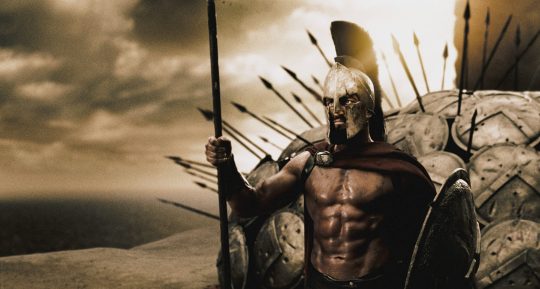
I was very taken by the portrayal of Leonidas, the Spartan king who commanded at Thermopylae. One of the most stirring speeches in the book is addressed to Xerxes, the King of Persia, and contrasts Xerxes with Leonidas: "I will tell His Majesty what a king is. A king does not abide within his tent while his men bleed and die upon the field. A king does not dine while his men go hungry, nor sleep when they stand at watch upon the wall. A king does not command his men's loyalty through fear nor purchase it with gold; he earns their love by the sweat of his back and the pains he endures for their sake….”
I also appreciated the inclusion of the women of Sparta — no shirkers themselves. They would be the first ones out shaming the men into doing their duty for their city (and that’s what it was all about for these people — the survival of the city first) if that was what was needed. I have to say I shed a tear when Leonidas confessed his criteria for selection of the 300. So much is said about Spartan men but the women kicked ass in a time and place where women were almost never seen and certainly never heard from. The first female Olympic champion was a Spartan princess called Kynisca, in 392 BC. She was also the first woman to become a champion horse trainer when her horses and chariot competed and won in the Ancient Olympic Games. Twice.
Arete is in some ways the most powerful character in the book. She is very well written. She just popped forth, full-grown from the brow of Zeus. I liked her a lot. Whether or not Sparta was a “good” place for women I can’t say. Certainly it would be fascinating as hell to beam back there and see, for real, how they lived and what they were like. It seems likely Pressfield drew inspiration of Arete from Plutarch’s Sayings of the Spartan Women. These, if you’ve ever read them, are unbelievably hard-core. For example, here’s one: A messenger returns from a battle to inform a Spartan mother (Plutarch gives her name but I’ve forgotten it) that all five of her sons have just perished honourably fighting the enemy. She asks this only: “Were we victorious?” The courier replies yes. “Then I am happy,” says the mother and turns for home. Here’s another: A messenger returns from another battle to tell another mother that one of her sons has been killed, facing the enemy. “He is my son,” she says. Her other son, the messenger continues, is still alive but ran from the enemy. “He is not my son,” she replies. Pressfield doesn’t see Arete quite that hard-core but certainly someone tough as nails who imbibed the Spartan mythos even more than the men and lived it. Pressfield admits in one of his interviews that this was all instinct, he could be wrong, but itt just was what felt right to him.

Before I had gone through Sandhurst after university I didn’t really condone crude language or lewd humour but it’s one of the ways that my stint in the army and especially out on a battlefield deployment changed me a little. I confess that I loved the sometimes crude humour - they’re soldiers in a time of war and you do or say whatever will get you through. Battle (especially foxhole) humour has a dark gallows feel and it’s entirely acceptable and authentic - just ask any veteran of any war. The battle descriptions are graphic - very graphic but not much worse than what’s in the Iliad. And we are talking about a battle in which thousands died by sword, spear, arrow and other various messy methods.
I also enjoyed how the book has a pleasing prose aesthetic that imitates the style of Homer. For the non-Classicist it may take a little bit of getting used to and slow down their reading but it sounds melodious to the ear.
Overall Pressman gives us a pulsating story in which the characters are not either super evil villains that cartoonishly want to “take over the world” or superheroes that can’t make mistakes. The author doesn’t take a side in this story, war is war, and people are people. They make mistakes, get angry or jealous, they do bad things in the name of good and vice versa. The book is not about good and evil, it’s about how different people and cultures understand the order, stability, good and even our minds and dreams. The enemies here aren’t some sort of Oriental magic freaks from far away lands, they are just men made in flesh and blood. Sure wanting to control more land or have more people serving them, but that’s everyone I know in the history of rise and fall of civilisations.

Was the Spartan defence of the Hot Gates worth it?
Clearly, yes. Cultures, if not civilisations, are nearly always rubbing up against each other and even clashing where they can’t bridge differences. I think Pressfield has it right when he said, “What the defence meant to me was this: its significance was metaphorical rather than literal. We are all in a battle that will end with our deaths and, like the Spartans at Thermopylae, we know it. The question is how do we deal with it. They answered by being true to their calling, to their brothers and sisters, and to their ideals. Early in the book there’s a passage where the Persian historian is narrating; he’s speaking of King Xerxes and his interest in the fallen Spartans. Xerxes says of them: “He knew they feared death, as all men. By what philosophy did their minds embrace it?”
In two of my favourite passages, Pressfield has his protagonist explain why sacrifice is so beautiful to the Greeks (or to anyone who has honour), "In one way only have the gods permitted mortals to surpass them. Man may give that which the gods cannot, all he possesses, his life”. This is a very profoundly moving insight.
Pressfield goes further and tries to answer a much deeper question as to why men fight and perhaps this is where it’s the ex-Marine and not the novelist in Pressfield who is talking, "Forget country. Forget king. Forget wife and children and freedom. Forget every concept, however noble, that you imagine you fight for here today. Act for this alone: for the man who stands at your shoulder."
Amen to that.
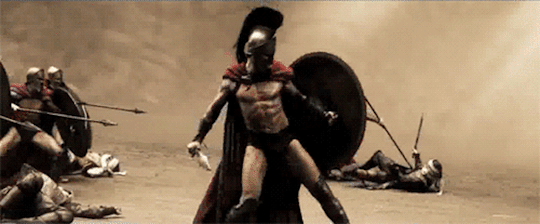
At the end of the book, I would have probably stranded there fighting side by side with them against the Persians. Because at that point, they were my friends, comrades, and heroes. It was when I put the book down that I realised that I already had the humble privilege of serving with my fellow brother and sister officers and soldiers of whom all were comrades, many were friends, and a few were unspoken heroes.
Does the battle of Thermopylae provide any lessons to us?
That is harder to discern because it depends on what values we already hold dear. Sparta was a small, compact, basically tribal society where every citizen (forgetting about the helots for the time being) was vitally needed and where warfare was hand-to-hand and absolutely communal, with your own brothers, uncles, father and friends fighting beside you, so if you acted the coward, there was no hiding it. The modern world of anonymity, mass culture, commercialism, shamelessness, indulgence of sensual desires, worship of money couldn’t be farther. The Spartan society is like a culture from the moon.

On an individual and interior basis, I think, can we take lessons that might help us. Self-discipline, loyalty, grit, hard work, perseverance, honour, humility, respect, and compassion.
On a societal level Spartans were not selfish and didn’t worship the cult of individualism as we do today. It was all about the group. In our age when civil strife, economic hardship, and effects of a unrelenting pandemic erode our trust in our political and civil institutions and set neighbour against neighbour because of the political or religious beliefs they might hold, the only thing we have left to fall back on is just our individual selves. It’s every man for himself. The Spartans would balk at such selfish individualism. The strength (and ultimately the effectiveness) of the Spartan phalanx was encapsulated in the “next man up” approach. If a warrior was injured or killed on the outer edge of the formation, the next man behind them would step up and take their place. The integrity of the group’s formation was protected at all costs, because without the strength of the phalanx to protect them, each man on had little chance of surviving the battle on his own. In a real sense, they had each other’s backs. They had the cohesion of a collective spirit. They were in it for each other together.
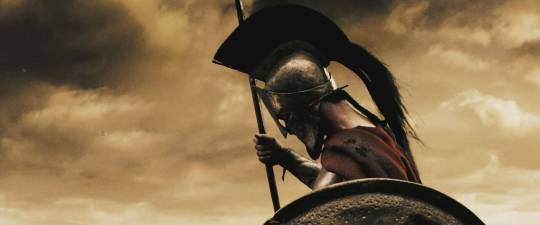
It’s not a bad thing in this day and age to be a little bit “spartan,” don’t you think?
#treat your s(h)elf#book#review#book review#reading#gates of fire#steven pressfield#sparta#thermopylae#persia#leonidas#xerxes#society#culture#antiquity#classical#greece#war#warfare#special forces#british army#US marines#battle#soldiers#arete#women#afghanistan#civilisation#TYS
45 notes
·
View notes
Text

Zack Snyder's Rebel Moon: Part 1 delivers a visually striking and original experience on Netflix.
While very few special effects may appear unpolished, the practical effects are beyond commendable. The diverse crew of characters is compelling, each worthy of their own film, making a longer Snyder Cut enticing.
Although choreography is occasionally clunky, strong acting and masterful cinematography contribute to an overall incredible watch.
6 notes
·
View notes
Text

ZackSnyder: Adding the final touches. The @RebelMoon teaser trailer will make its global debut live @Gamescom. See you there on Tuesday, August 22. #RebelMoon
17 notes
·
View notes
Text
Psycho Analysis: The 50 Greatest Comic Book Superhero Movie Villains
I think it’s pretty obvious I love villains, considering I have this whole series dedicated to talking about them. And anyone who has followed me for long enough should know that I love superhero movies. So, naturally, I love comic book superhero movie villains. They’re fun, they’re over the top, they’re colorful… They’re the best kinds of villains, especially when a great actor gets pulled in to play them. So why not bring Psycho Analysis back in time for the holidays with a big villain list special?
Here’s the thing: For a long time, comic book movie villains were pretty shitty. You had fun, campy ones every now and then, but most of them were really boring or just plain sucked. You had generic doomsday villains all over the place, or villains who were disrespectful of their comic origins (looking at you, Galactus). Or that’s what I thought going into this, anyway. Turns out there are a lot more villains I would say are genuinely great than ones who I’d call shitty. It’s just the shitty ones are so shitty you think they’re the rule rather than the exception. But that’s another list; right now, we’re celebrating the villains we love to hate.
The rules of this list are simple: So long as the villain has appeared in either a standalone comic book superhero movie, a superhero movie series, or is part of a superhero cinematic universe, they are fair game for this list. I bent the rules a tiny bit in a couple of places, but this is the one consistent rule. This means no Teen Titans Go! To the Movies Slade or Shredder, because despite being based on properties that started as comics, they’re based more on the cartoon version of the characters.
Here are the honorable mentions, the villains who didn’t make the cut for one reason or another (but who I think deserve a shout out regardless): Scarlet Witch (Doctor Strange in the Multiverse of Madness), Gorr (Thor: Love & Thunder), Jigsaw (Punisher: War Zone), Hela (Thor: Ragnarok), Carnage (Venom: Let There Be Carnage), Ebony Maw (Avengers: Infinity War), Steppenwolf (Zack Snyder’s Justice League), The Motherfucker (Kick-Ass 2), and Black Mask (Birds of Prey). Special shout outs to Mr. Mind (Shazam!) and Darkseid (Zack Snyder’s Justice League), who would definitely be on this list if they actually had a chance to do more than look cool and foreshadow future movies (ones that will never happen in the latter’s case). And an apology to Cottonmouth of Luke Cage, a show I have sadly not had a chance to watch; if fan reaction to the character is anything to go by, he’d have ended up on this list. Oh, and if I included comic book movies outside superhero ones, I’d probably have thrown Gideon Gordon Graves (Scott Pilgrim) and maybe, possibly Xerxes (300) on the list as well.
Now, on to the list! Oh, and be aware: There are SPOILERS liberally sprinkled throughout the little blurbs I wrote for each villain.
50. Poison Ivy

Batman & Robin
Even in a film as campy as Batman & Robin, Poison Ivy is outstandingly campy. Uma Thurman knew exactly what she was doing, making everyone’s favorite sapphic, slutty supervillain the icon she deserves to be, even with some truly stupid haircuts. If only Harley was in the movie.. it boggles the mind.
49. Taserface
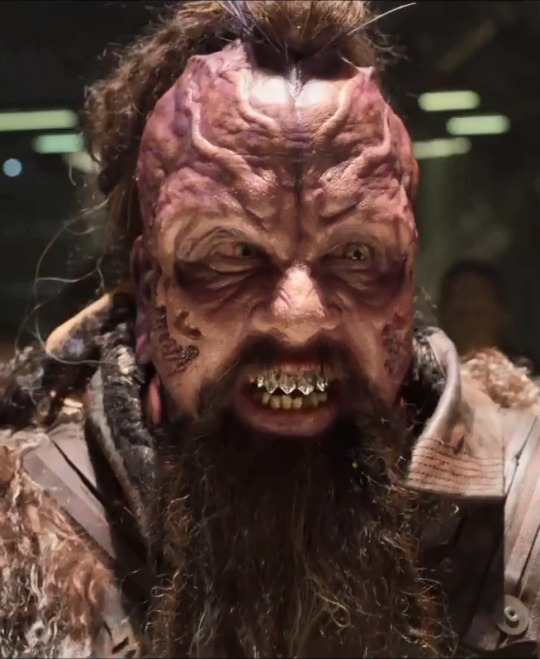
Guardians of the Galaxy Vol. 2
Taserface is one of the funniest minor villains ever. I mean, look at him. This man is absurd, and calls himself “Taserface!” But he’s also scarily effective, pulling off a brutal mutiny and killing most of Yondu’s crew. The man gets no respect up until his death, but he never stops being entertaining.
48. Riddler
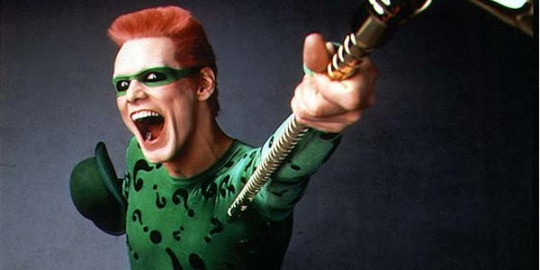
Batman Forever
Jim Carrey in his prime as one of the most over-the-top and cartoonish villains in Batman’s rogues gallery? Yes please! This is one of the single campiest performances in either of Schumacher’s Batman films—and that’s saying a lot. He can grate on the nerves a little bit, but Carrey is just having way too much fun. Really didn’t need to see his bulge, though.
47. Sandman
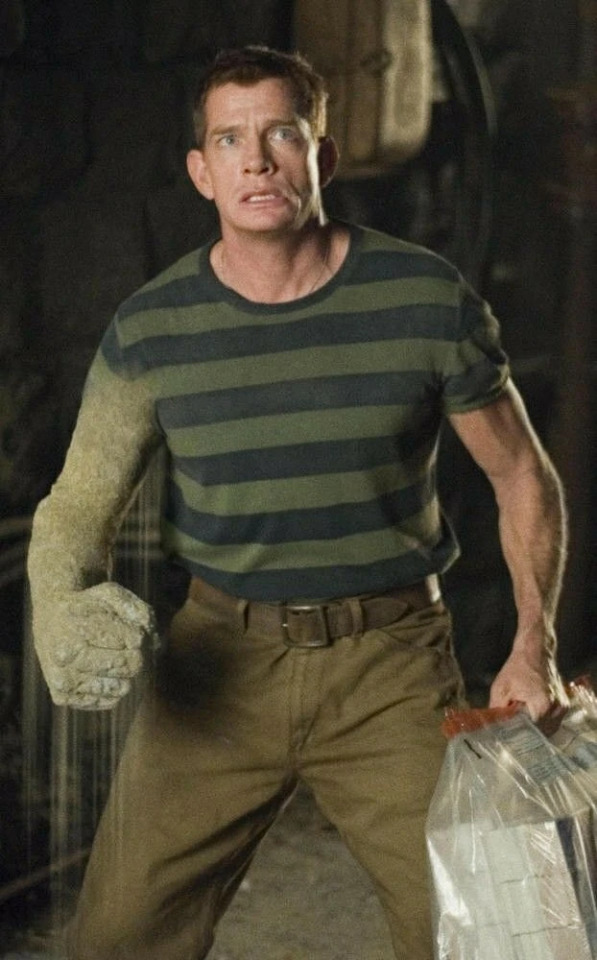
Spider-Man 3
Thomas Haden Church gets big points for being the spitting image of Flint Marko, but he also deserves some credit for delivering a genuinely nuanced and emotional performance in the hot mess of a film he’s in. The scene where he is created is still to this day one of the most powerful moments in any comic book movie ever, a fantastic display of visual storytelling and impressive effects work congealing into a shining moment in a film that doesn’t have many.
46. Obadiah Stane
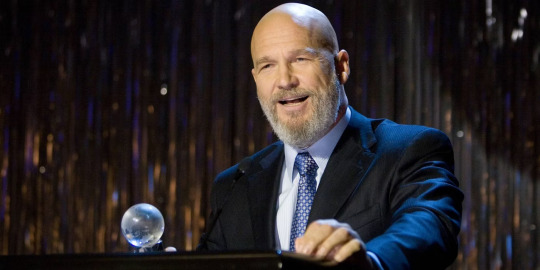
Iron Man
Stane is a weird one. On the one hand, he’s a precursor to every bad villain in superhero movies to come, as he ends up as a Big Gray CGI Monstrosity with the same powers as the hero. On the other hand, Jeff Bridges is just so delightfully hammy and he is the first of his kind in the modern age, so I think it’s fair to cut him a bit of slack.
45. Red Skull

Captain America: The First Avenger
Hugo Weaving may have initially had little respect for the role, but there’s no denying he put good work into it. Red Skull is sinister, hammy, and deliciously evil, perfect for the pulpy adventure tale of Cap’s debut. I mean, the man backstabs the Third Reich because he considers himself eviler than them, what more could you ask for?
44. Milo
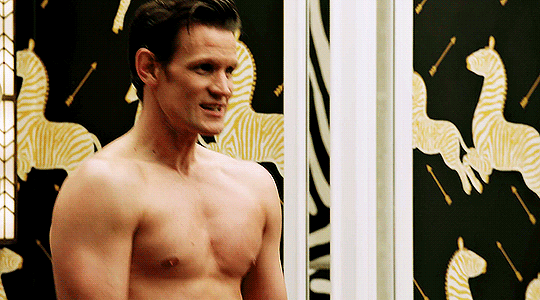
Morbius
Look, you knew at least one “so bad it’s good” villain was gonna be here, and I’ve gotta hand it to Milo; he really makes the most of Morbius’s meticulous mediocrity. Matt Smith I’d clearly having the time of his life, giving a dramatic performance better than this movie deserved and a hammy supervillain performance that this movie desperately needed. And let’s not forget the man has the sickest dance moves this dude of Bully Maguire.
43. Bane

The Dark Knight Rises
The Dark Knight Rises may not be the greatest finale ever, but it did what so many Batman adaptations fail to do: It acknowledged Bane is a cunning mastermind behind the muscles. Throw in an awesome performance from Tom Hardy and a mind-boggling amount of meme-worthy lines and you have yourself a fantastic villain. His truly embarrassing final fate and the fact he was pretty blatantly whitewashed are the only thinga keeping him so low on the list.
42. Violator
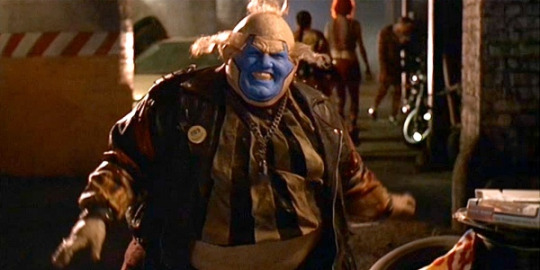
Spawn
Spawn may not be the best superhero movie ever, but if there’s one shining spot in it (besides how cool the titular character is), it’s John Leguizamo’s madcap performance as the demonic Clown. Despite being steeped in grimy gross out comedy, he still manages to be fun to watch, mainly because literally everyone around him finds him as disgusting as the audience does. And even if his demon form is hit with janky PS2 CGI, he still manages to get in some badass lines and moments. Bottom line: Leguizamo did not eat actual maggot pizza to miss out on this list.
41. Bullseye

Daredevil
Colin Farrell did not miss the mark with his portrayal of Daredevil’s assassin archenemy. It’s such a fun, hammy, laughably evil performance that helps add a bit of fun to the edgy proceedings by being basically a literal cartoon character come to life. Now if he only got that fucking costume…
40. Arthur Harrow
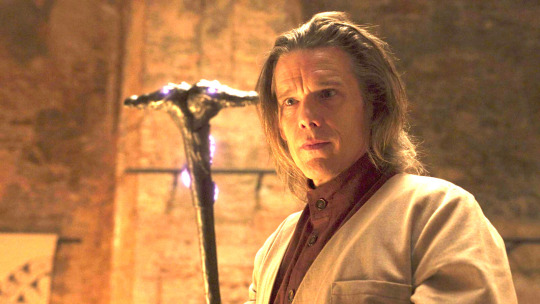
Moon Knight
Transforming a minor, unimpressive villain from the comics into a credible threat onscreen is par for the course for superhero media, but few end up quite this impressive. Most of the credit has to go to Ethan Hawke, who really gives it his all as the sorcerous cult leader, but I think the imagined version inside Marc’s mind that’s the head doctor of the psychiatric facility is where he really shines, as it plays with our perception a bit.
39. Ultron
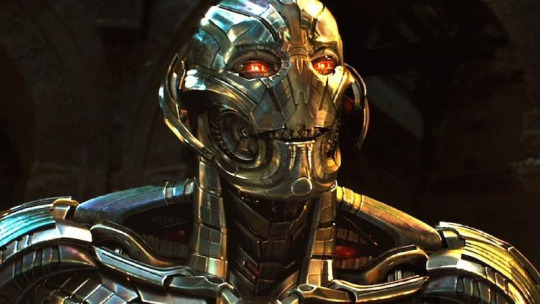
Avengers: Age of Ultron and What If…?
Here is a villain desperately seeking a film worthy of him. James Spader is giving such a fun, engaging performance with only a couple of hiccups, but everything around him is just so quippy and stupid that the film struggles to take him seriously. Still, he deserves a spot here at the very least for his incredibly realistic villain origin: He took one look at the internet and decided humanity needed to be destroyed. And hey, if nothing else What If…? gave him a chance to shine and be the threat he deserves to be!
38. Ulysses Klaue

Black Panther
Andy Serkis sadly gets offed halfway through Black Panther, but even with his limited screentime he has become a beloved minor antagonist. It helps he managed to have a fantastic cameo in Age of Ultron (one of the sole bright spots in that film), and that for his role as the first act’s villain in Black Panther Serkis approaches the role with such humor and grimy charm that you’ll probably feel bad when this scumbag ends up in a body bag.
37. The Thinker
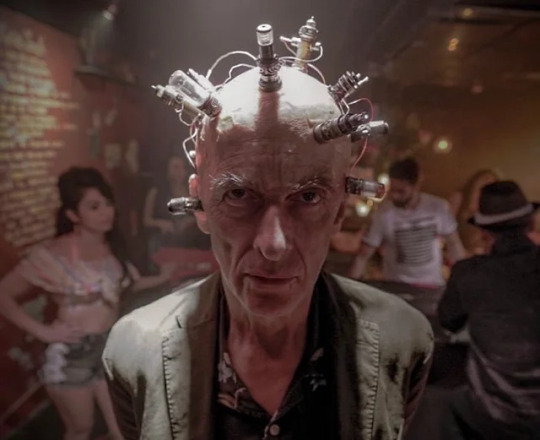
The Suicide Squad
The roulette wheel of villains in The Suicide Squad eventually lands on Peter Capaldi’s maniacal mad scientist, and while he doesn’t have any major fights he manages to steal the show with just how slimy and egotistical he is. He’s just a nasty, awful bastard, and being responsible for the final villain going full kaiju rampage is worth making it on this list.
36. Lex Luthor
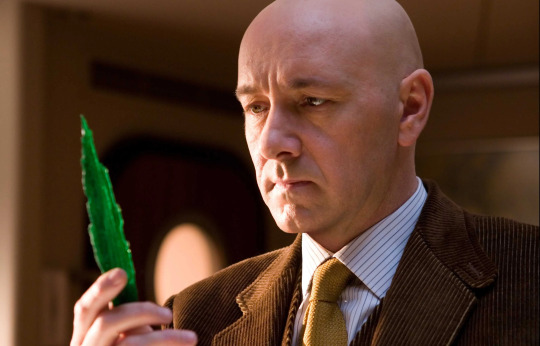
Superman Returns
It’s so fucking sad that despite being used in almost every Superman film ever made, the onily time his most iconic foe was ever good when he was played by real-life creep Kevin Spacey. But hey, being a villain in real life gives just the right touch of unhinged ego and cockiness Luthor needs.
35. Top Dollar
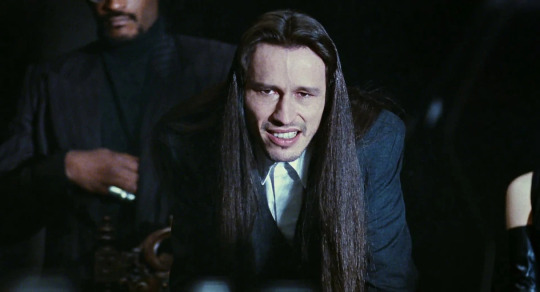
The Crow
When I made the list of the 30 best comic book superhero movies, I left off The Crow, mainly because I didn’t think of it as a superhero movie (it’s more like a friend to me if I’m being honest). Kind of a harsh snub there, so as an apology Michael Wincott’s effortlessly cool and needlessly cruel gangster overlord gets to take a place on this list. Not many people can bang their half-sibling and still come away being awesome, but somehow owning the Six-Fingered Sword from The Princess Bride and using it in a duel probably goes a long way towards making Top Dollar one of the most memorable crime bosses you’ll ever see.
34. Dr. Sivana
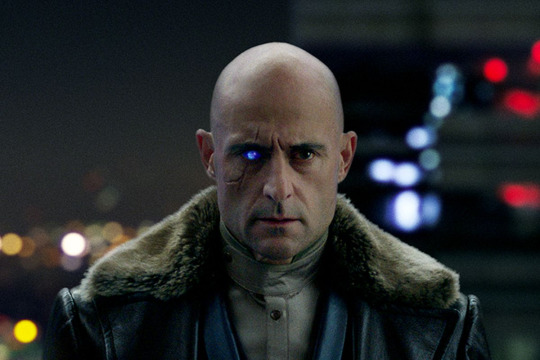
Shazam!
When you have a villain as silly as “Doctor who harnesses the powers of the seven deadly sins because of darkness in his heart to get revenge” you need a damn good actor to pull that off. Mark Strong is a damn good actor, and this is a taste of what we could have had if they let him play Sinestro more than once. I for one can’t wait to see him take orders from an evil caterpillar!
33. Sabretooth

X-Men Origins: Wolverine
Liev Schreiber makes his first mark on this list as Wolverine’s ultraviolent archenemy, and easily the best part of Origins. He’s fun and menacing, and a lot more memorable than whatever the hell that poser in the original X-Men was. The greatest crime of the franchise (besides piss-poor continuity and bad writing and over reliance on Wolverine) was never bringing back Sabretooth to plague good old Logan one more time.
32. Penguin

The Batman
In a movie as dark as this, we need a little bit of levity. Enter Penguin, here imagined as a cartoonish mobster that would almost be out of place if this movie didn’t clearly have a bit of West influence in it. Colin Farrell is no stranger to playing hilariously cartoonish supervillains so in his role here he excels, and it’s easy to see why he’s getting his own spin-off series.
31. Sebastian Shaw
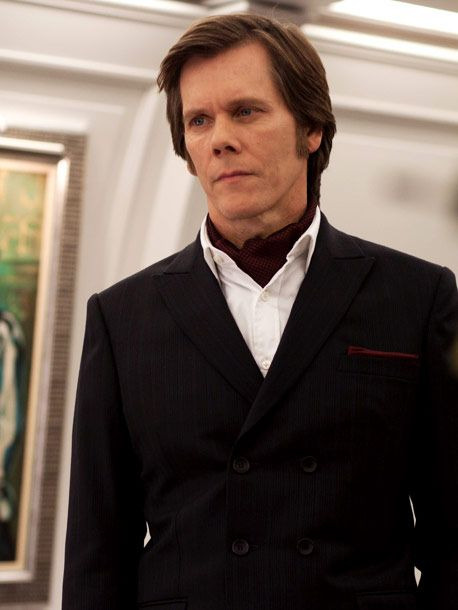
X-Men: First Class
Long before he spent Christmas with the Guardians of the Galaxy, Kevin Bacon terrorized the X-Men in one of their best outings. While he’s not winning any points for comic accuracy, he definitely wins points for being responsible for Magneto’s start of darkness, being the one who killed his mother (and thus a Nazi). He’s a slimy supremacist bastard, and it’s oh so satisfying to watch Magneto make sure there’s zero degrees of separation between his skull and a magnetized coin.
30. Ozymandias

Watchmen
As is often the case with Snyder’s Watchmen, the movie misses the point a bit here. They turned the charming, charismatic, muscular Chad that was the comic Adrian into a cold, brooding, emotionally distant soyboy. It kinda ruins the surprise that this dude is the evil mastermind. Still, with how slavishly loyal the film is, it still manages to make Veidt one of the finest and most morally complex supervillains to hit the big screen… he’s just not quite as impressive as his comic version (though really, who is?).
29. Zemo
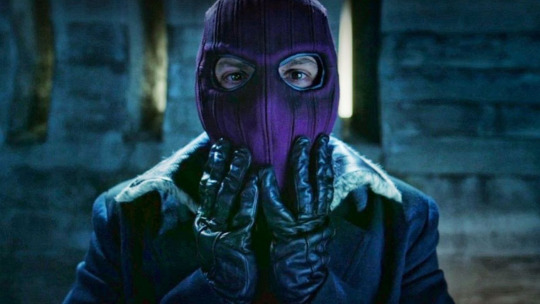
Captain America: Civil War and The Falcon and the Winter Soldier
Zemo is the obvious evolution of the supervillain archetype Loki codified, but he is far more refined. His motives are solid and understandable, his methods are heinous enough to root against, and he makes some valid points. Then he proceeds to do what not even Thanos could: He tears the Avengers apart. He’s the rare villain who actually wins, the rarer villain who actually gets to live, and the rarest villain of all who gets to return, steal the show with awkward dance moves and praising Marvin Gaye, and—most crucially—look cool wearing a purple sock on his head.
28. Ocean Master
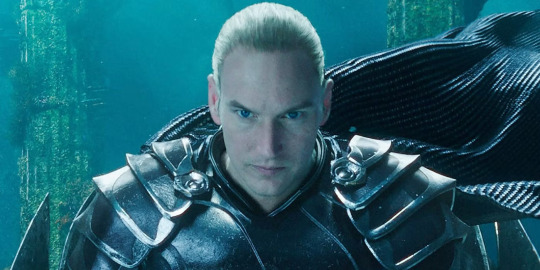
Aquaman
Good old Orm doesn’t make the list by being the deepest or most complex character (though he’s not lacking in depth and is pretty understandable in some of his motives), but by being just so delightfully comic booky. He’s hammy, he poses, he wears a silly helmet, and he acts as a great narrative foil for our hero. Bonus points for not only being a villain who is at least a little justified to the point he’s redeemed—by the power of love, no less!—but one who survives the movie to get more development later on.
27. Doctor Doom

The Fantastic Four
The unreleased Fantastic Four film of the 90s may have been hobbled by a budget consisting of change they found in the couch cushions, but the love and respect for the source material always managed to shine through. Nowhere is that more evident than with Doom; he’s hammy, he’s grandiose, he has a giant castle and throne room, he acts like everyone except him is a total idiot, and he won’t stop calling Reed a douchebag even when he’s about to fall to his ambiguous death. He may not put up much of a fight, but this Doom is head and shoulders above Dooms with a thousand times the budget.
26. Justin Hammer

Iron Man 2
Iron Man 2 is a sloppy film that was a grim omen of problems that would plague the MCU later down the line, but it did one thing right in giving the world the inimitable Justin Hammer. Where Tony Stark is an idealized fantasy billionaire who is actually a good person who wants to help people, Hammer is a more realistic take to serve as a contrast. He’s smug, he’s smarmy, he engages in all manner of illegal activity to undermine his betters, and most crucially he is an incredible idiot. This man is basically the MCU version of Elon Musk, but where Musk’s attempts at trying to be cool are pathetic and cringeworthy, Hammer’s attempts to ape Tony’s style just serve to make him endearing. And do you think Musk could ever have dance moves half as sick as Hammer’s? Get real.

25. The Grandmaster

Thor: Ragnarok
It’s Jeff Goldblum as space Caligula. ‘Nuff said.
24. Mr. Freeze

Batman & Robin
People have ragged on Arnold’s campy Freeze for years due to his non-stop barrage of ice puns, but much like his home movie he’s honestly not as bad as the haters would make you think. Schwarzenegger is adept at both comedy and drama, and is able to deftly balance the tragic melodrama of Freeze’s backstory and his campy cartoonishness, all while wearing one of the coolest costumes ever seen. And you know what? The ice puns aren’t that bad. Chill out.
23. Prowler

Spider-Man: Into the Spider-Verse
Uncle Aaron is an inspired take on Uncle Ben, a character who has been done to death (literally). The positive dynamic he has with his nephew is familiar, but the fact he has a criminal alter ego who is relentlessly and unknowingly hunting his beloved nephew down for Kingpin is a fresh take on a tired tale. He still dies, and his death is the catalyst for Miles to fully embrace being Spider-Man, while alive he is equal parts menacing force and tragic figure. With apologies to Miss Octavius, he’s definitely the best secondary antagonist in the film.
22. Penguin
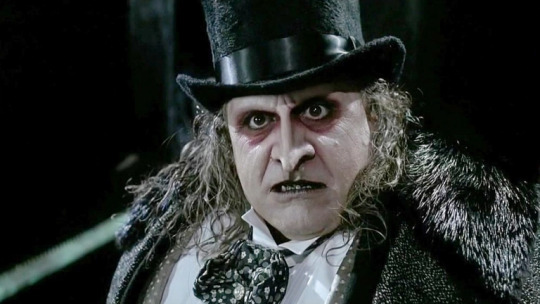
Batman Returns
Danny DeVito’s portrayal of Penguin as a tragic, deformed monster as opposed to a classy gangster has gone on to inform basically every portrayal of the character since, to the point where sticking closer to the character’s roots is seen as weird. It’s not a surprise, though; DeVito manages to make Penguin a menacing, creepy villain as well as a pitiable figure all at once.
21. Vulture
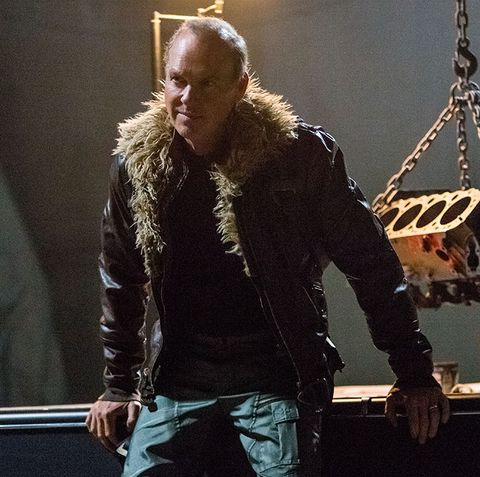
Spider-Man: Homecoming
Michael Keaton is no stranger to comic book movies, and here he demonstrated he is just as adept at playing badass villains as he is at playing heroes. Taking one of Spider-Man’s corniest villains and giving him a high tech upgrade and sympathetic motivation was a smart move, as was keeping him noble even in the end. Of course, his best scene doesn’t even have him in his bird suit; it has him in his regular clothes, slowly piecing together the truth about Peter while the boy sits in the backseat of his car. Keaton’s acting in the car ride scene is something else entirely.
20. Loki

Marvel Cinematic Universe
I was personally not a huge fan of Loki’s turn as an out and out doomsday villain in the first Avengers movie, but it’s hard to deny his impact on the medium and how he was the first villain in the MCU to actually have nuance, which was much better showcased in the Thor films. And you’ll never hear a bad word from me about Tom Hiddleston’s performance, which is fantastic no matter what he’s in, up to being the best part of every episode of What If...? he’s in. It’s no wonder Loki got his own spin-off show with all that in mind.
19. White Dragon
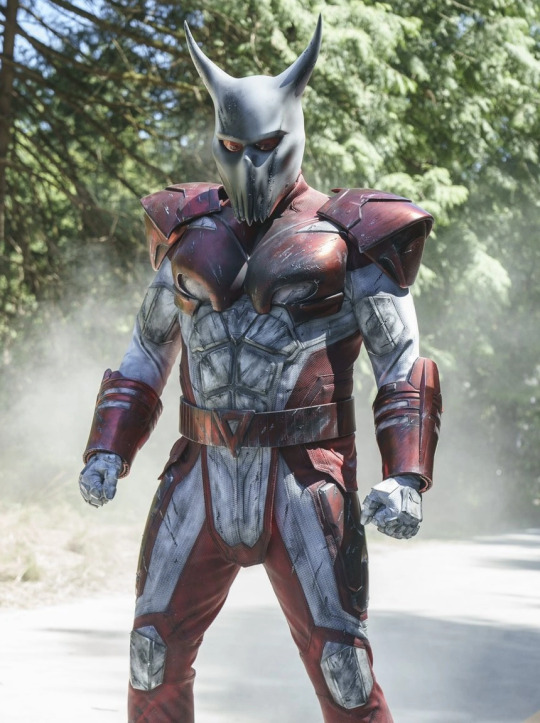
Peacemaker
Peacemaker’s dad is probably the biggest piece of shit on this list, being an openly racist neo-Nazi supervillain and one of the most abusive fathers you’ll ever see. By all accounts he shouldn’t be as cool as he is, but between Robert Patrick’s fantastic performance and James Gunn being a master of writing conflicts between parents and children like this, he becomes an enjoyable hate sink you oh so badly want to see get what’s coming to him. And even better, despite being built up as a genius inventor and badass villain, he makes crucial errors in his suit’s construction that leads to his demise, showing once and for all that for all their posturing, white supremacists are just fucking morons who fold like wet paper at the slightest opposition.
18. General Zod
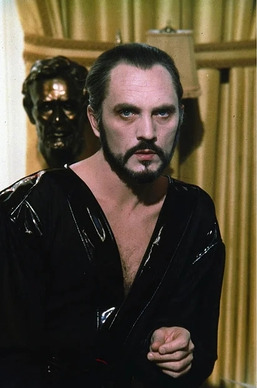
Superman II
Terrence Stamp took a villain who wasn’t quite iconic and managed to make him on the level of Luthor when it comes to Superman villains almost anyone could name, to the point where Stamp’s portrayal influenced the comic version going forwards. He has an air of class and menace that makes it pretty easy to want to kneel before him. Zod has become a little overexposed, being the go-to Superman bad guy when they don’t feel like using Luthor, but when the original take was this good it’s seriously hard to fault them too much.
17. Mysterio

Spider-Man: Far From Home
Mysterio isn’t just brilliant because he’s a fun, meta take on a great goofy comic villain, with him and his team essentially being Marvel movie creators gone bad, fabricating CGI spectacle to gain accolades. And he’s not just brilliant because of that fantastic illusion sequence where he puts Spidey through a dizzying nightmare trip. No, he’s brilliant because not only did he convince the world at large that he’s an incredible hero, he managed to convince some audience members that he’s just a poor, innocent worker who was taken advantage of by his former billionaire boss (which ignores so much, but especially that he’s working with someone who was complicit in dealing arms to terrorists). He’s certainly not a hero, but he’s most definitely a master of illusions.
16. Starro

The Suicide Squad
Starro serves as the final boss of The Suicide Squad, unleashing kaiju destruction on Corto Maltese. And like all great kaiju, there is an air of tragedy to the big starfish; he never wanted any of this, in its final moments choosing to lament how content it was to simply drift through space before it was kidnapped and forced to undergo perverse experiments at the hands of the American government (and particularly Thinker). Starro doesn’t even want to fight the Squad at first, implying it’s grateful to them for freeing it from torture. The Squad may not put much thought into how tragic Starro’s lot is, but the audience sure will.
15. Agatha Harkness

WandaVision
In a technical sense, Agatha didn’t do too much wrong besides gaslight Wanda in an attempt to steal her powers. Sure, she kidnaps Wanda’s kids and kills their dog, but none of those things are real; and sure, she hypnotized Ralph Bohner (heh) into thinking he was Quicksilver, but it’s no worse than Wanda’s mass brainwashing of Westview. But she just relishes so much in being a wicked witch, from her torment of Wanda to her insanely catchy villain song, that I’m inclined to take her word for it and say she’s a bad guy. She’s definitely getting some kind of redemption in her own show, but for now Kathryn Hahn camping it up like she just walked off the set of Hocus Pocus can take high marks on this list.
14. Amanda Waller

DC Cinematic Universe
I don’t think there has ever been such an impressive turnaround for a comic book villain ever. It was never a matter of Viola Davis, who gave her all from day one, but a matter of how abysmal the writing in Suicide Squad was, portraying her as an incompetent idiot who was still allowed to get away with everything in the end. Once Gunn took the reigns of the franchise, though, Waller finally got her due, sending an entire squad to their death as a distraction and basically playing 4D chess for the whole movie. She gets her comeuppance too, so it’s a lot more satisfying watching her win a few schemes when you know she can lose a few too. Being a greater-scope villain for Peacemaker just further cemented her as being the magnificent bitch the character should be; we can only hope she keeps it up in her next major appearance.
13. Kingpin

Daredevil (The movie and the Netflix series), Spider-Man: Into the Spider-Verse
It’s honestly amazing that a villain as seemingly simple as Wilson Fisk has not only been done differently three times in ways that make him cool and engaging, but he’s also maintained a high level of quality in every appearance. Michael Clarke Duncan brought size and intimidation to his version, doing so well despite Daredevil’s weak theatrical cut he got to reprise the role in the underrated Spider-Man: The New Animated Series; Liev Schreiber voiced the memeiest version of the character to date, one who even holds the distinction of killing one Spider-Man and inadvertently creating another; and Vincent D’onofrio is so good he managed to pull the entire Netflix Daredevil show into the MCU canon with his appearance in Hawkeye. Fisk would be the easiest villain in the world to half-ass and make generic, but we’ve been blessed with fantastic actors in the role. Kingpin gets the distinction of being the one of only two villains with multiple entries in one spot.
12. Kilgrave

Jessica Jones
David Tennant is the third and final former Doctor to make the list, and he’s so good at being a bad I bent the rules ever so slightly to get him in on the list. The canonicity of Jessica Jones to the MCU is a bit unclear right now, but do we really want to live in a world where his fantastically chilling performance is Thanos’d from the timeline? A walking avatar of rape culture and a laundry list of microagressions, Kilgrave is one of the slimiest, most sadistic, most reprehensible characters ever conceived… and yet you can’t help but love to hate him.
11. Catwoman

Batman Returns
There have been plenty of Catwomans in film, with her being portrayed as a hero, an anti-hero, and even a silly Silver Age villainess. But I think Miss Kyle was done best as an antagonist in the hands of Michelle Pfeiffer, who absolutely nails the dynamic between Selina and Bruce (and their alter egos) as well as portraying the inherent tragedy of this take on the character. Throw in Pfeiffer looking damn fine in that costume and her handling the whip like a pro, and you have what might just be the purr-fect Catwoman.
10. Namor
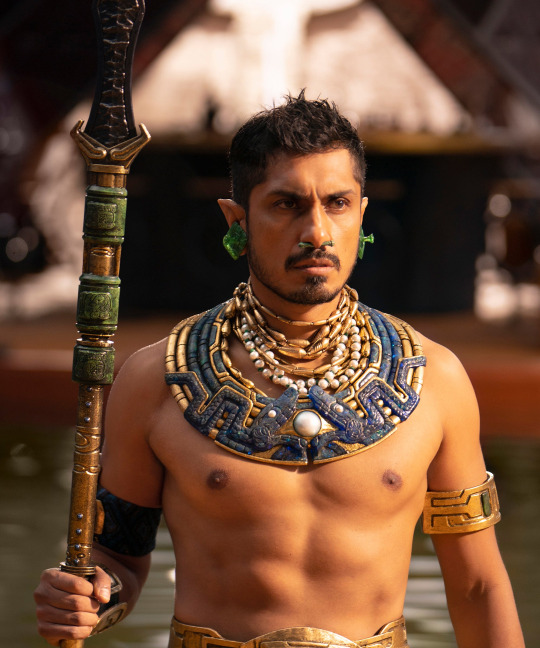
Black Panther: Wakanda Forever
Phase 4 of the MCU was largely uneven, with villains who could have been great under better circumstances being held back by sloppy narrative choices. Big names like Gorr and Scarlet Witch were let down by weak stories, so there was a sense of dread I had going into Wakanda Forever that they’d let down one of Marvel’s oldest and most iconic anti-heroes. I had nothing to worry about in the end; Tenoch Huerta brought the character to life with all the charm, charisma, and command of the screen the Sub-Mariner deserves, and boy does he look good. The story treats him with the respect he deserves (no jokes about his ankle wings!) and while he’s certainly no Killmonger, he easily cements himself as a fantastic anti-hero who you can’t wait to see more of. And really, I can’t stress this enough: He is really fucking hot.
9. Riddler

The Batman
I’m sure I’m in the same boat as a lot of people, where I saw the Zodiac-inspired getup of the new Riddler and thought this was going to be a Nolanesque gritty reimagining of the character. But lo and behold, we got something infinitely better: A Riddler that utilizes all manner of gruesome Saw traps while also maintaining the hilarious campy quality that’s inherent to the character. He sends personalized greeting cards with clues, he hosts evil livestreams for his fans, he sings “Ave Maria” to Batman, and most importantly he has a sick sense of humor. I love Jim Carrey, but he ain’t got shit on Paul Dano when it comes to riddlin’.
8. Joker

Batman: The Movie, Batman, The Dark Knight, and Joker
Joker is a character who always manages to get a fresh take despite being absolutely done to death, and each interpretation highlights a different aspect that makes the character great. Romero’s Joker is very much the playful, criminal prankster; Nicholson is the swaggering, comically violent gangster; Ledger is the chilling, maniacal anarchist; and Phoenix is the disturbed, broken man who had one really bad day. And the one thing common across all of them is that each of them has made the Joker a consistently compelling and engaging villain. And while he hasn’t done enough yet to get in on this spot of the list entirely, Barry Keoghan deserves a shout out for portraying Joker as he truly is: A giggling, hideous, conniving freak.

7. Thanos

Avengers: Infinity War and Avengers: Endgame
Thanos was a villain nearly a decade in the making, getting teased in The Avengers before making sporadic appearances here and there. His lack of direct action in the franchise had some worried… and then he stole the show in Infinity War, kicked everyone’s ass, and emerged victorious. They managed to take a villain whose main goal in the comics is to fuck a skeleton and somehow make him work, namely by keeping his headstrong self-righteousness intact even if he isn’t trying to bone the grim reaper, with Josh Brolin delivering one of the finest performances of his career. There are other villains that are better than him, but there aren’t any villains who truly feel as grand of epic as he did, and with DC dropping Darkseid from their cinematic universe it’s doubtful there ever will be one again, at least not for a very long time.
6. Doctor Octopus

Spider-Man 2 and Spider-Man: No Way Home
Alfred Molina’s Otto Octavius is an excellent contrast to Dafoe’s Goblin. Where Gobby is hammy, hilarious, and gleefully sadistic, Octavius is grandiose in a more understated way and a lot more tragic, while still managing to be as fun as a mad scientist with robot tentacles should be. You can definitely tell Molina is bringing his stage acting skills to the table here with how he carries himself and delivers his lines, making Octavius stand out among the more traditionally campy villains in Raimi’s other films. He got to return for an encore in No Way Home and gets the awesome fight scene and redemption arc he deserved, fully rounding him out and giving the diabolical doctor a happy ending all while proving that he makes movies better just by being in them.
5. Xu Wenwu

Shang-Chi and the Legend of the Ten Rings
Shang-Chi would be a nearly perfect movie if not for one thing: It kills off one of the single greatest and most complex villains in the MCU for a CGI dragon battle. They managed to take two of the most infamous “Yellow Peril” characters in pop culture (Fu Manchu and the Mandarin) and gave him depth and complexity, his complicated relationship with his children driving the plot more than anything else. It’s a testament to how good the writing and how good Tony Leung’s performance is that he’s this high, because despite his death the impact on his children doesn’t disappear just because it’s time for CGI monsters. This more than makes up for how lame Guy Pearce Mandarin was, that’s for sure.
4. Ego

Guardians of the Galaxy Vol. 2
Familial conflict is the cornerstone of many great villains, and Ego has that in spades. At first it seems like Marvel’s living planet has undergone adaptational kindness, with him genuinely coming across as a fun father figure to Peter, but that just makes the big twist hit even harder. Ego becomes even nastier retroactively, as on top of what he did to Peter’s mother and scores of his own children, the holiday special reveals Mantis is his child and he only kept her alive as a slave for her powers. He’s genuinely one of the nastiest, most twisted villains the MCU ever showed us, and he more than lives up to his name with his narcissistic plan to reshape the universe in his image. Kurt Russell absolutely knocked it out of the park with his performance.
3. Magneto
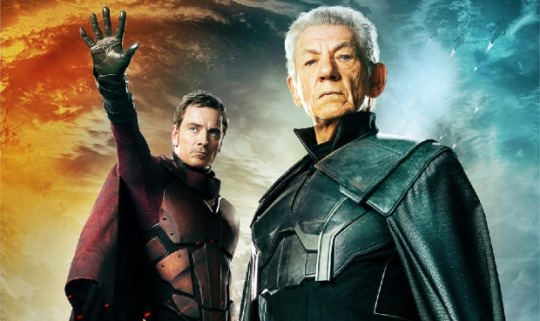
X-Men film series
Be it Sir Ian McKellan or Michael Fassbender, you could always count on one thing with Magneto: He’d be one of the most compelling parts of the film. Watch McKellan and Fassbender carry The Last Stand and Apocalypse, respectively, and see how this iconic anti-villain can make even the biggest turds watchable. And when the movie is genuinely good, such as X2, First Class, or Days of Future Past… That’s where the real fun comes in. Magneto is one of the single greatest characters ever created, and thankfully even with the spotty track record of the X-Men films it never felt like he wasn’t given his due.
2. Green Goblin

Spider-Man and Spider-Man: No Way Home
We can argue all day about whether or not his costume is stupid, but one thing that is utterly inarguable is that Willem Dafoe delivered the gold standard for hammy supervillains. Playing up the Goblin as something of a split personality, Dafoe can instantly switch from the sympathetic Norman to the cackling Gobby with ease, something really demonstrated by his return in No Way Home. Across two cinematic universes, Gobby proved himself to be Spidey’s greatest and most personal foe, and more importantly than that he proved to be an endless fountain of memes thanks to his insanely quotable lines. If you’re making a cackling, campy comic book movie villain, they are gonna have to try really hard to make it out of Gobby’s shadow.
1. Erik Killmonger
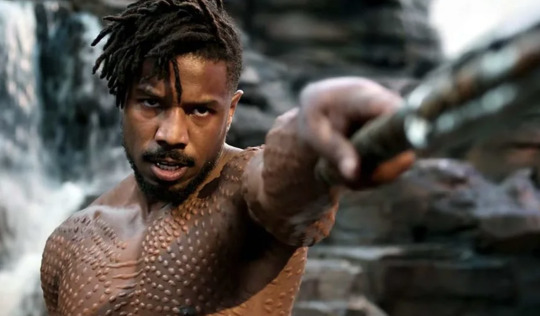
Black Panther
When I began making this list, there was never any question who number one was going to be. Of fucking course it was always gonna be Killmonger, a villain who is so cool, stylish, badass, and complex that he completely redeems the film’s awkward PS3 cutscene of a final battle thanks to his genuinely impactful death scene immediately after. He’s so good that when he shows up for a surprise appearance in Wakanda Forever he absolutely and completely eclipses how great Namor is and reminds us all why he was such a great villain with only a single scene. What’s most impressive, however, is that technically he did win in the end, being directly responsible for T’Challa dying as well as inspiring him during life to open up to the world and try and help black people around the world. Michael B. Jordan proves once and for all that whatever problems his role as Johnny Storm had, it wasn’t on him; the man is one of the best actors of our time.
21 notes
·
View notes
Text
Behind The Scenes footage of Zack Snyder's Justice League.
You can see just how much fun the cast and crew had.
32 notes
·
View notes
Video
Wonder Woman 1854.
Before there was a director attached, Zack Snyder and his stunt crew tried to convince WB execs who didn't greenlit a Wonder Woman for decades - to actually DO IT.
This was the pitch.
https://twitter.com/snyder_all/status/1530256083574480899
Samantha Win originally posted the video.

Win has worked with Synder recently on Army of the Dead.
I don’t know if it’s true. This was shot around 2015... But that would’ve been cool to see.
4 notes
·
View notes
Text
Me when WB start promoting the Snyder Cut again on Twitter, and my mind immediately goes to the Snyder verse and the Ayer cut of Suicide Squad...

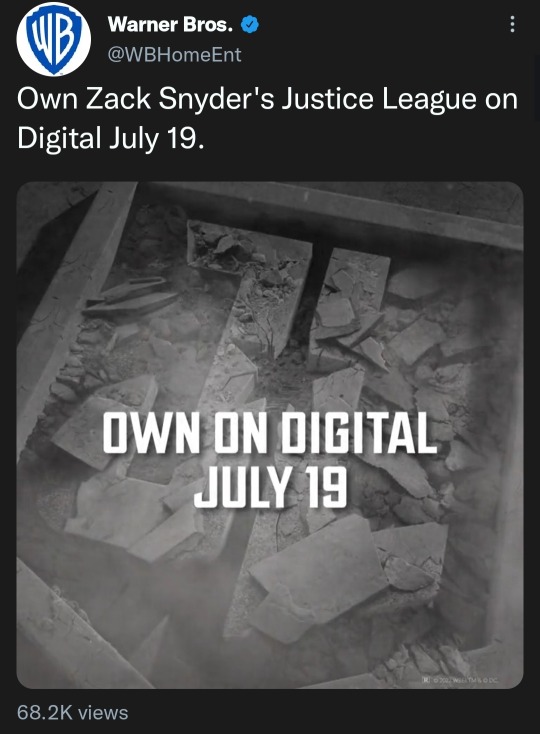
Look, I know they've recently had a shake up with staff and it's a long shot, but all I want in life is the Ayer cut of Suicide Squad. That's all I want. I swear.
David Ayer deserves to have the movie he actually made be put out there. It's not only fair to him, it's fair to both the cast and crew who put their blood, sweat and tears into it.
If it's good for Zack to have his cut put out there, then it goes without saying that the same should be done for David.
#justice league#zack snyder#zsjl#david ayer#ayer cut#suicide squad 2016#suicide squad#warner bros#dceu#snyderverse
2 notes
·
View notes
Note
Thoughts on the Batgirl fiasco? ;(
Demoralizing all around.
I feel awful for the actors and crew, and especially for the lead actress Leslie Grace. No matter the intentions and whatnot, the message coming across is that the new person in charge does not believe that having a non-white performer play a white female superhero is good for the brand, and that sucks.
To reiterate a point I made in my other posts, it's an example of the double standards at play, and who and what gets "Second Chances" and how little "vote with the wallet" or anything applies. If Alfred Pennyworth can get a 4-season TV show, mediocre GOTHAM can flourish for long, they can do a movie about Batgirl especially with JK Simmons and Michael Keaton in the cast, and Zack Snyder somehow dodges director jail, but somehow this is the bridge too far. This is a terrible thing.
1 note
·
View note
Text
Rebel Moon Director's Cut: Prepare for More Coming Soon
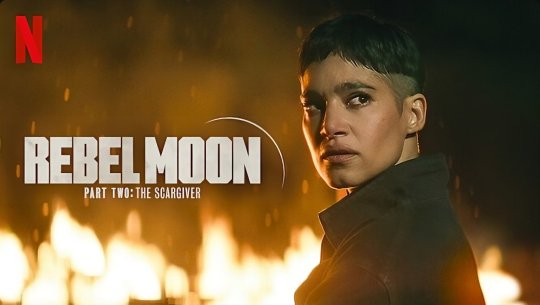
Calling all Zack Snyder fans! Hey! Yes, you!! Have you heard the news? The Rebel Moon director's cut is gearing up to be another Snyder adventure, and we finally got some juicy details. Remember those space battles and those chiseled characters in Rebel Moon? Get ready, because the director's cut is about to crank things up to eleven. We're talking R-rated, folks. That means get ready for some brutal violence, gore that might make you squirm, and language that would make a sailor blush.
This ain't like the original Rebel Moon. This is Snyder unleashed, and if you've seen his other flicks, you know he doesn't hold back in his directors' cuts. But wait, there's more! The first part of the director's cut might not just be longer, it might have a whole new name. Hold onto your helmets, because whispers suggest it could be called "Rebel Moon Chapter One: Chalice Of Blood" or even "Rebel Moon Part One: A Child Of Fire (Extended Edition)." Sounds pretty badass, right?
Here's the thing: Snyder's been hinting that these director's cuts are basically alternate universes for the original Rebel Moon movies. So, the new title could be a way to really set it apart.
Speaking of release dates, things are still a bit fuzzy. Rebel Moon co-writer Kurt Johnstad says we can expect both director's cuts to drop sometime in 2024. He can't give us the exact date yet, but hey, at least we know it's coming! Get ready to clear your schedule for a six-hour Snyder marathon – that's right, six hours of pure, unadulterated Rebel Moon goodness.
While we wait for the director's cut to drop, let's not forget Rebel Moon: Part Two The Scargiver, which is already streaming on Netflix. It picks up right where the first movie left off, with Kora and her crew gearing up for another epic showdown.
So, are you ready for the Rebel Moon director's cut? If you dig intense action, graphic content, and Snyder's signature style, then this is gonna be your jam. Just remember, this ain't for the faint of heart. Or non-Snyder fans. Stay tuned, folks, because this Rebel Moon saga seems like it's just getting started.
Source: Comicbook.com
https://www.youtube.com/watch?v=6qr1G4vmtPg
Read the full article
0 notes